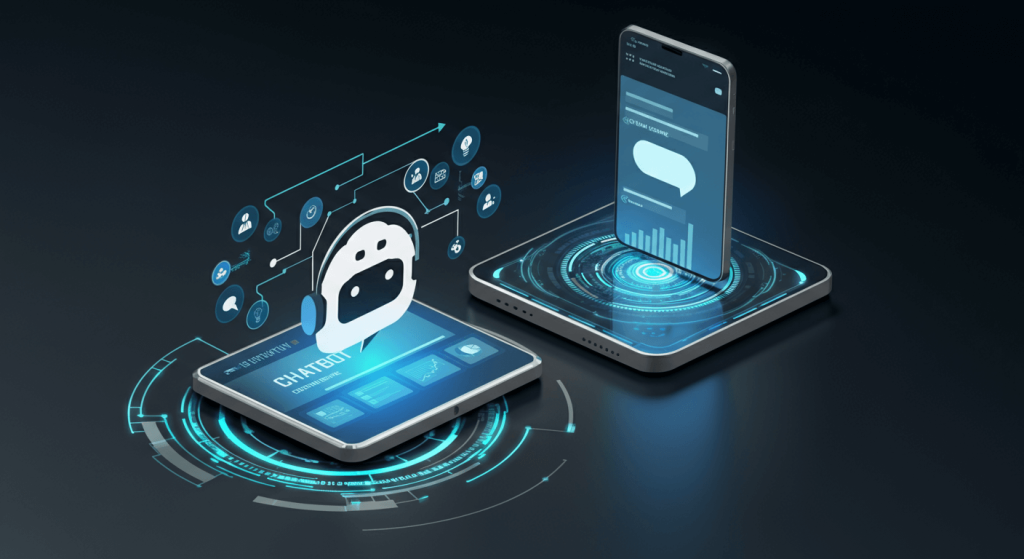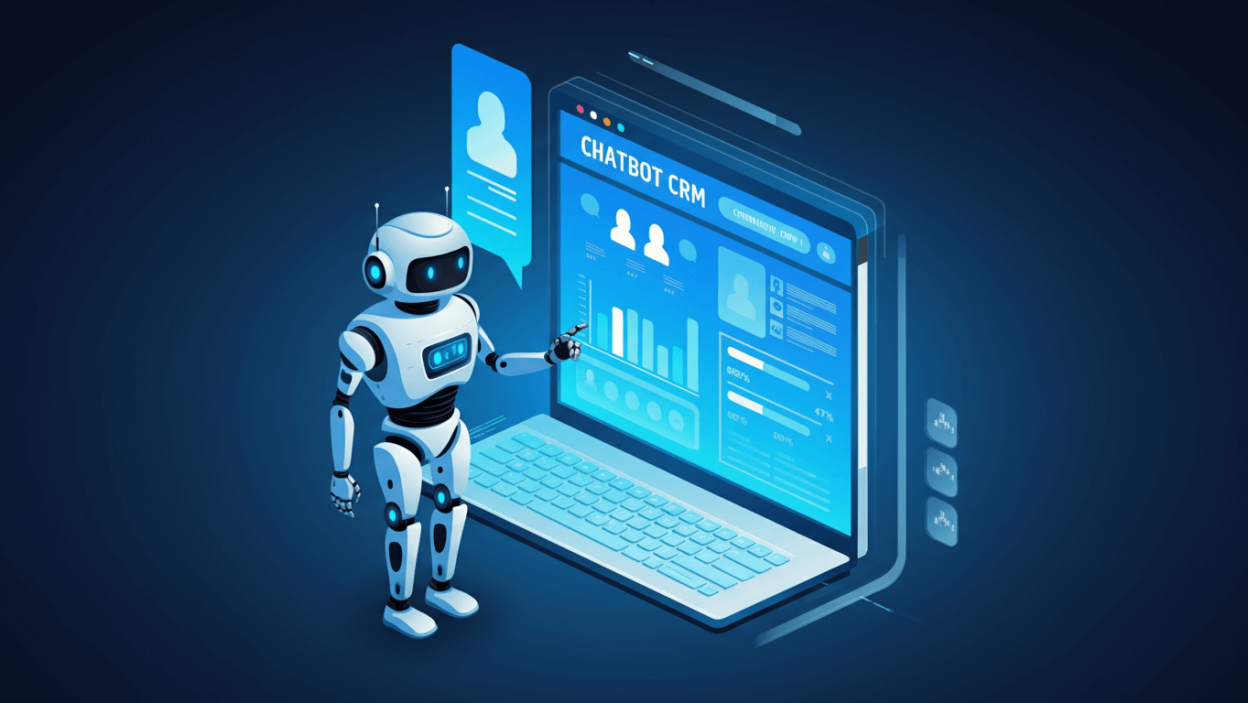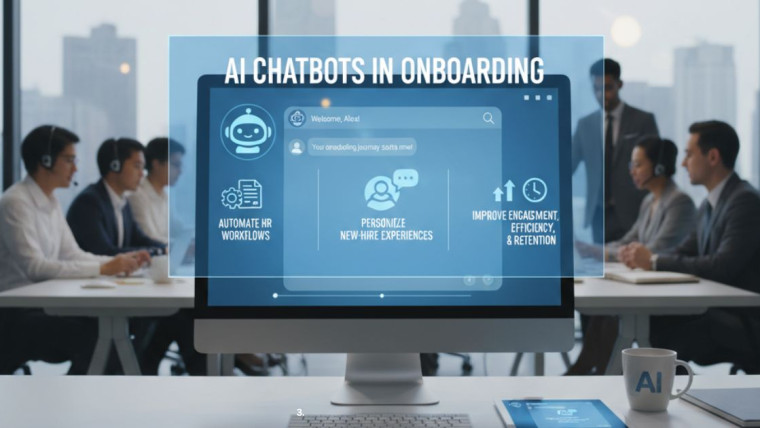Chatbot integration with CRM is one of the smartest ways to enhance your sales funnel. From generating leads to improving customer interactions, this pairing creates a seamless customer experience while helping companies sell more effectively.
If you’ve been wondering how to use chatbot CRM integration to improve your sales process, you’re in the right place. This blog will help you understand why combining chatbots with CRM is a game-changer and walk you through the steps to get started.
Why Integrate Chatbots with CRM?
Before jumping into the “how,” let’s look at the “why.” Combining chatbots with a CRM system brings numerous benefits beyond just convenience.
1. Streamlined Data Collection
Chatbots are excellent at capturing customer information in real time. When connected with a CRM, that data doesn’t sit idle; it’s immediately logged into your system. Imagine having an automated assistant that not only collects names, emails, and queries but also organizes them into actionable insights within your CRM.
For example, when a customer engages with your chatbot about a product, their preferences and conversation history are stored within your CRM. This allows your sales team to approach them with relevant offers based on their previous interaction.
2. Faster Lead Qualification
Qualifying leads is a critical—but time-consuming—step in the sales funnel. Chatbots can manage this by asking targeted questions and segmenting leads based on their responses. For instance, a chatbot can instantly determine whether a visitor is ready to buy or just exploring options by monitoring their engagement and interaction data.
This automatic qualification process feeds directly into the CRM, where leads are categorized and prioritized, saving time for your team while ensuring hot leads don’t fall through the cracks.

3. 24/7 Customer Engagement
One of the major customer pain points is the delay in response time. Customers expect immediate attention, and chatbots make this possible. By integrating with a CRM, chatbots can deliver personalized responses based on previous interactions, all day, every day.
This keeps prospects engaged and ensures that their questions are answered promptly, even outside of business hours.
Steps to Integrate Chatbots with CRM for Smarter Sales Funnels
Now that you see the clear advantages, here’s a step-by-step guide to integrating chatbots with your CRM for an enhanced sales funnel.
Step 1. Choose the Right Chatbot Platform
The first step in chatbot CRM integration is choosing the right chatbot platform. Look for platforms that allow easy integration with popular CRM tools like Salesforce, HubSpot, or Zoho.
Key factors to consider include:
- Natural language processing (NLP) capabilities for more human-like interactions.
- Customizable templates for sales-specific chatbot workflows.
- Integration with multiple communication channels (e.g., websites, social media, and messaging apps).
Step 2. Connect Your CRM with the Chatbot
After selecting a chatbot platform, it’s time to integrate it with your CRM. Most modern chatbots provide built-in integrations or APIs to connect seamlessly with CRMs.
Here’s a step-by-step example for connecting a chatbot to HubSpot CRM:
- Log in to both your chatbot platform and your CRM.
- Go to the integrations section within the chatbot platform and select your CRM system.
- Authorize access using your CRM credentials and API keys.
- Map the fields (e.g., name, email, customer query) from the chatbot to your CRM data fields.
Once connected, your chatbot will automatically sync customer data with your CRM system, ensuring you never miss valuable insights.
Step 3. Define Chatbot Goals
Your chatbot’s effectiveness depends on clear goals. Define what you want to achieve through chatbot CRM integration, such as:
- Generating leads by collecting customer data.
- Speeding up lead qualification.
- Enhancing customer retention with personalized recommendations.
Use SMART goals (Specific, Measurable, Achievable, Relevant, Time-bound) to track progress and improve performance. For instance, “Increase lead qualification through the chatbot by 30% within the next three months.”
Step 4. Focus on Personalization
Successful integration relies on personalization. Use your CRM’s data to tailor chatbot interactions. For instance, when a frequent customer inquires about a product, the chatbot can address them by name and suggest relevant products based on their purchase history.
This level of personalization builds trust and enhances the customer experience.
Step 5. Test and Improve the Integration
Once the integration is complete, it’s essential to test its functionality. Simulate different scenarios to ensure that:
- Data flows smoothly between the chatbot and CRM.
- Chatbot workflows align with customer needs.
- Leads and customer information are accurately categorized in the CRM.
Analyze performance metrics (response time, lead conversion rate, etc.) and gather feedback to improve the chatbot’s functionality continually.
Best Practices to Maximize Chatbot CRM Integration

1. Use Automation Wisely
While automation is powerful, over-automation can make interactions feel robotic. Maintain a balance by escalating complex queries to human agents when needed.
2. Monitor Analytics
Most CRMs and chatbot platforms provide analytics dashboards. Use these insights to track key performance indicators (KPIs) like response times, lead generation rates, and customer satisfaction scores.
3. Secure Customer Data
Data security should always be a top priority. Ensure your chatbot platform complies with data privacy regulations like GDPR and provides encryption for data transfer.
Real-World Example of Chatbot CRM Integration
Case Study: Improving Lead Conversion at Sephora
A leading beauty and cosmetics brand, Sephora, integrated its chatbot with Salesforce CRM to optimize its sales and customer engagement process. Here’s what they achieved:
-
A 42% improvement in lead conversion rates through faster lead qualification.
-
Personalized product recommendations that boosted repeat purchases by 18%.
-
Reduced response time by 60%, thanks to 24/7 chatbot assistance.
This successful integration shows how combining a chatbot with a powerful CRM can transform customer engagement and drive sales growth.
Transform Your Sales Funnel with Chatbot CRM Integration
Integrating chatbots with your CRM is a game-changing strategy for businesses looking to enhance efficiency, engagement, and sales. From streamlining data collection to personalizing every customer interaction, the benefits are unmatched.
Don’t get left behind in the automation revolution. Start by selecting a chatbot platform that aligns with your business needs, and integrate it seamlessly with your CRM system. The results will speak for themselves.
Looking for a smarter way to manage your sales funnel? Get started today and take control of your customer interactions with chatbot CRM integration.








Chatbots for Customer Retention: How AI Improves Loyalty and Reduces Churn
Transforming Employee Onboarding with AI Chatbots: A Step-by-Step Guide
Emergency Response Chatbots: Revolutionizing Crisis Management with AI
Revolutionizing Recruitment: How Chatbots Streamline Hiring Processes and Elevate Talent Acquisition